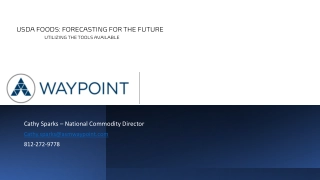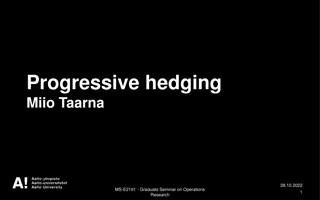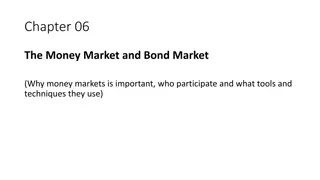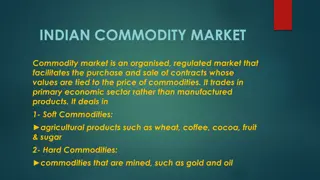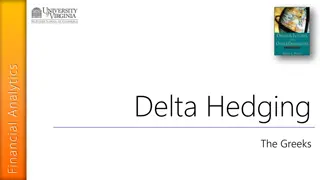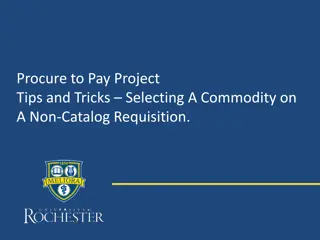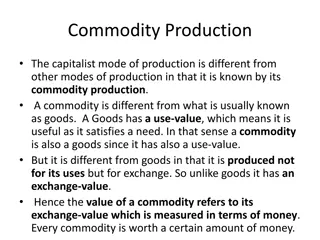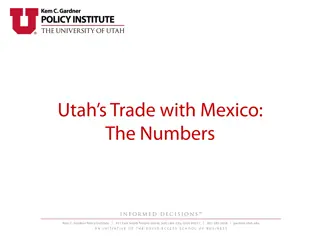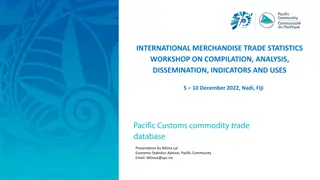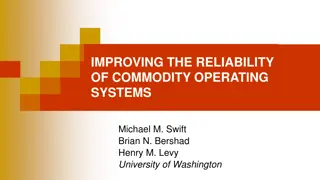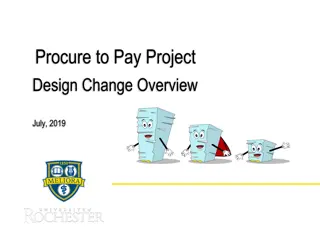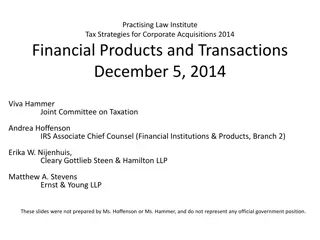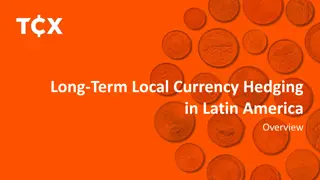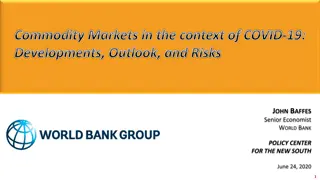Understanding Commodity Hedging in Financial Markets
Commodity hedging involves mitigating risk associated with price fluctuations in raw materials by taking opposite positions in futures and physical markets. This strategy helps individuals and businesses safeguard against potential losses and ensure revenue certainty. An example with a wheat farmer demonstrates how hedging works to offset price declines, ultimately reducing losses and maximizing profits.
Download Presentation

Please find below an Image/Link to download the presentation.
The content on the website is provided AS IS for your information and personal use only. It may not be sold, licensed, or shared on other websites without obtaining consent from the author. Download presentation by click this link. If you encounter any issues during the download, it is possible that the publisher has removed the file from their server.
E N D
Presentation Transcript
FED TAPERING COMMODITY HEDGING
Hedging in commodities markets By Prof. Simply Simple
COMMODITY HEDGING Commodity hedging means reducing or controlling risk arising out of fluctuation in raw-material prices Commodity hedging is done by taking a position in the futures market that is opposite to the position in physical market Any buyer or seller facing the risk of volatile commodity prices can do commodity hedging after compliance with regulatory requirements.
COMMODITY HEDGING Hedging is a two-step process. For instance, a wheat farmer can sell wheat futures at current prices to protect the value of his crop prior to harvest If there is a fall in price, the loss in the cash market position will be countered by a gain in the futures position Thus, the farmer meets his objective of ensuring certainty in his revenue
COMMODITY HEDGING Example Assume it is the month of July and the farmer expects a drop in the selling price of corn His corn production of 15000 baskets is likely to be ready in September The current price (July) is $4.50 per basket To hedge his risk, he sells three 5000 basket futures contracts on October corn for more than the current price...say $5 per basket When September arrives, prices have fallen down to $3.90 a basket
COMMODITY HEDGING So, he is now going to receive a much lower price on his corn To offset this potential loss, he buys corn futures for $4.60 per basket If you remember, he had sold corn futures at a price of $5 and he is buying it back at the lower price of $4.60. This is because the price of corn futures has also now come down with the fall in price of corn So, in the futures markets, he has earned a profit of $0.40 due to the difference in his selling and buying prices ($5 sale price - $ 4.60 buying price = $0.40 gain)
COMMODITY HEDGING Though, he is forced to sell the corn at a reduced price of $3.90 per basket, his effective selling price works out $4.30 per basket ($3.90 + $0.40 profit from futures) So, his sales revenue comes to $64500 ($4.30 X 15000 baskets) He would have lost $6000, if he had not hedged i.e. profit from futures ($0.40 X 15000 = $6000) So, between his cash and futures positions, he has effectively reduced his losses from the price decline
COMMODITY HEDGING Hope you have now understood the concept of commodity hedging.
In case of any query please email : professor@tataamc.com
DISCLAIMER The views expressed in this lesson are for information purposes only and do not construe to be any investment, legal or taxation advice. The lesson is a conceptual representation and may not include several nuances that are associated and vital. The purpose of this lesson is to clarify the basics of the concept so that readers at large can relate and thereby take more interest in the product / concept. In a nutshell, Professor Simply Simple lessons should be seen from the perspective of it being a primer on financial concepts. The contents are topical in nature and held true at the time of creation of the lesson. This is not indicative of future market trends, nor is Tata Asset Management Ltd. attempting to predict the same. Reprinting any part of this material will be at your own risk. Tata Asset Management Ltd. will not be liable for the consequences of such action. Mutual Fund investments are subject to market risks, read all scheme related documents carefully.




